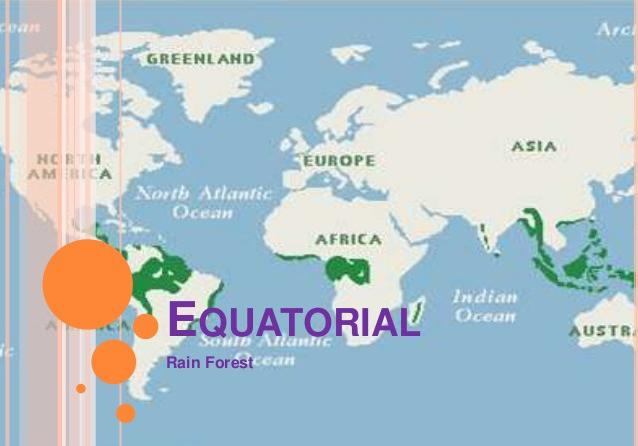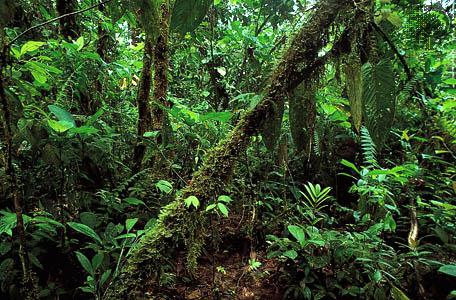The equatorial belt is a geographical area of our planet, which is located along the equatorial strip. It covers both parts of the North and at the same time the climatic conditions in both parts of the world are the same. The equatorial climate zone is considered the hottest on Earth, but at the same time there are high temperatures combined with the same high humidity. Well, let's take a closer look at all the features of this natural zone and figure out in which latitudes it is located
Coordinates and geographic features of the location
First, let's figure out the exact position relative to the numbers. The equatorial belt is located on both sides of the equator, from 5-8 ° N. NS. to 4-11 ° S sh., limited That is, it is surrounded by strips of the subequatorial zone, which are very similar in their climate and natural features. The peculiarity of its position lies in the fact that it does not stretch along the entire equatorial strip. It is discontinuous and breaks up into a number of isolated areas confined to the continents (Africa and South America) and clusters of islands in the ocean (Malay Archipelago, Sri Lanka, etc.).
The belt covers the land area adjacent to zero latitude in the West of South America, as well as the coastal territories of the Pacific Ocean. The next spot is the central part of West Africa. The widest and longest strip of the equatorial climate is in the Indian Ocean. It captures both the water area and the islands that are there.
Weather characteristics of the equatorial belt
The main feature of this natural zone is the predominance of equatorial ones here.They form over the region a zone of stable temperatures that do not change throughout the year. Thermometer readings in the shade range from 25 to 30 above zero, and this difference is an uncharacteristic feature of seasonal temperature changes. It all depends on solar activity and the amount of clouds that form over the region on a given day. It is also worth noting that the temperature in the equatorial zone largely depends on how far a particular geographic point is from the ocean. The deeper into the continent, the hotter it gets. The coastal areas are more filled with moisture, therefore precipitation occurs more often here, and the air does not heat up too much. 
Precipitation and humidity
The equatorial belt is a dynamic minimum zone. The pressure here is extremely low, because the amount of precipitation that falls on the region is maximum. From 7 to 10 thousand millimeters of precipitation falls here annually. It is worth noting that at equatorial latitudes there is also a very high evaporation rate, which slightly “corrects” this whole picture. Thanks to her, the region does not drown in the rains that happen here very often. The very same precipitation falls in the form of heavy showers with thunderstorms and lightning, and almost every day. After such bad weather, which lasts for several hours (mainly at noon), the sun comes out, moisture evaporates, the earth dries up, and the "typical summer" is restored. 
Movement of the sun
What else is unique about the equatorial belt is its unique dynamics of the Sun. Many people believe that the length of the day here does not change for a second during the year, but in fact this is not the case. On average, the sun rises above equatorial land 12 hours a day. Moreover, its degree relative to the planet is equal to 90. These data are characteristic exclusively for a narrow strip, which is crossed by the equator itself. In the Northern Hemisphere, as in all other zones of the planet, in summer the day increases by 1-2 hours, and in winter it decreases by the same time. Summer here falls like ours - in June-August. In the Southern Hemisphere, on the contrary, during these months the day is reduced by 1-2 hours, and in December-February it increases. 
Flora and fauna
Due to the fact that the equatorial climate zone is a zone of great humidity, an incredibly lush flora has formed here from time immemorial, in which an equally diverse fauna lives. Here are those plants that can not be found anywhere else on the planet. These are evergreen thickets, impenetrable jungle. They are formed by ficuses, kausukonos, date and coffee bushes. There are also various fern pitchforks, a lot of lianas and black trees. Native animals are divided into two types: those that live in trees and the terrestrial class. The former include numerous monkeys, in most cases chimpanzees. There are also representatives of the feline family - leopards, cheetahs, jaguars. There are many sloths that live in trees. There are tapirs, rhinos, hippos. 
Interaction with the tropics
Now let's briefly consider the natural zones that surround the equatorial climatic zone. The tropical belt, if we do not take into account the transitional subequatorial latitude, has both much in common and a lot of differences with the equator. First, this is the zone of dynamic maximum. There is a minimum of precipitation - no more than 500 mm. Also, there are slight fluctuations in temperature - up to 3 degrees during the change of seasons. The peculiarity of this zone is that the flora and fauna here is rich only along the sea coast. All areas that are located away from the ocean are dry and covered with impenetrable deserts.
Conclusion
The equatorial belt is the hottest and most unique part of our planet. It occupies an extremely small part of the territory, but at the same time it accommodates many rare species of animals and plants. This is the wettest corner of the Earth, where it rains every day, and every day all traces of it are dried by the hot sun.




